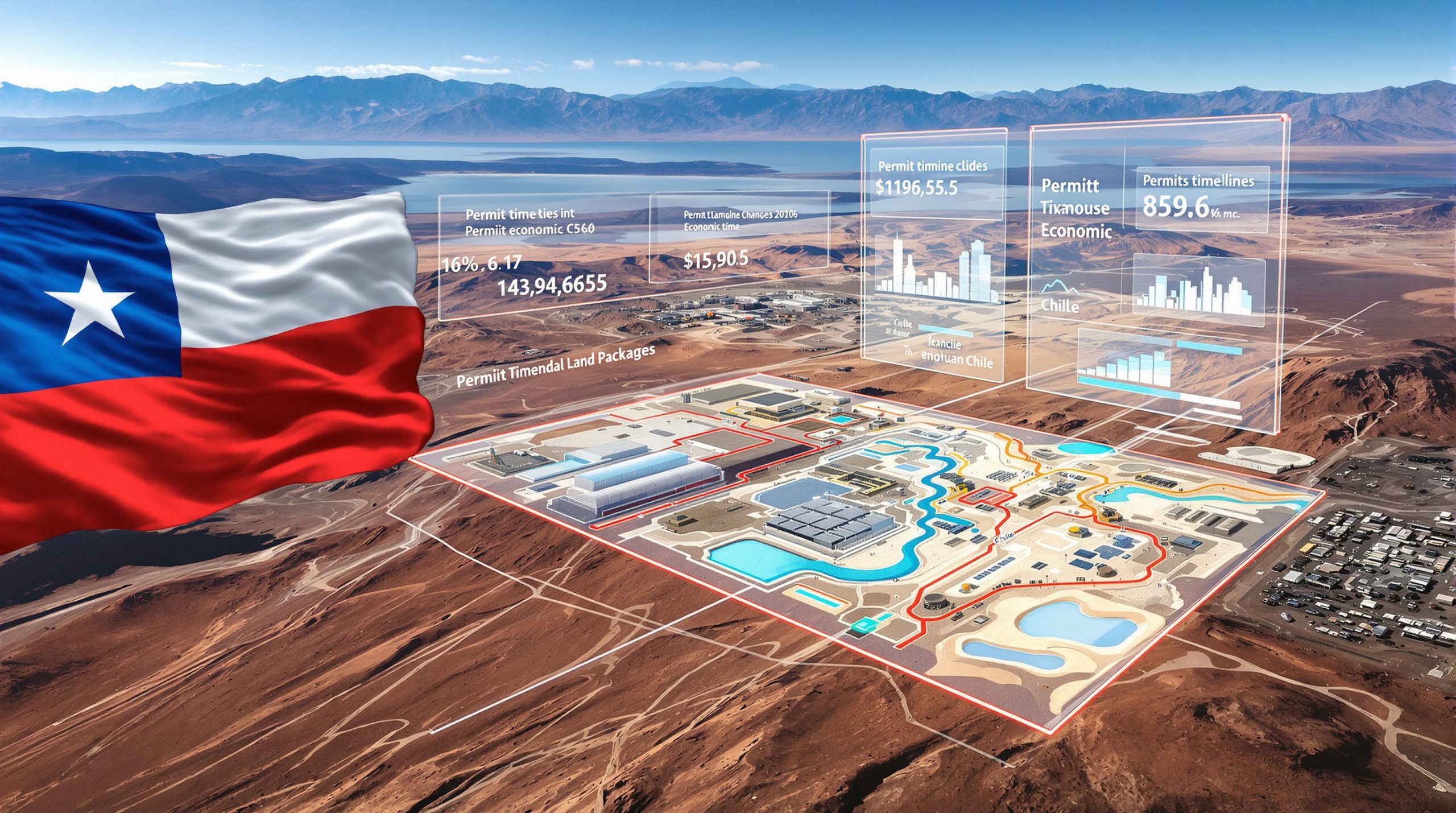How Did Anglo American's Platinum Spin-Off Transform the Mining Landscape?
The mining industry witnessed a significant restructuring in 2025 when Anglo American completed the demerger of its platinum business, creating an independent entity called Valterra Platinum. This strategic move represented one of the most substantial corporate restructurings in the global mining sector, dramatically reshaping both companies' market positions and investment profiles. The anglo american platinum spin-off created ripples throughout financial markets and reconfigured the platinum group metals (PGMs) industry landscape.
The Strategic Rationale Behind the Platinum Demerger
Anglo American's decision to separate its platinum business stemmed from a comprehensive portfolio review aimed at streamlining operations and enhancing shareholder value. The company identified its copper and iron ore assets as core strategic priorities, necessitating a structural shift away from other commodities. This big pivot strategy followed broader industry trends where major miners have increasingly concentrated on fewer, high-return commodities rather than maintaining diverse portfolios across multiple resource categories.
The platinum business, despite its significant value, represented a different growth trajectory and capital allocation profile compared to Anglo's preferred focus areas. By creating Valterra as an independent entity, Anglo American enabled both companies to pursue tailored strategies aligned with their specific market dynamics and operational requirements.
What Financial Impact Did the Platinum Spin-Off Have on South Africa's Economy?
Foreign Direct Investment Outflows Following the Demerger
According to South African Reserve Bank data, the country experienced substantial foreign direct investment (FDI) outflows of R73.5 billion in Q2 2025, contrasting sharply with the R11.7 billion inflows recorded in Q1. This dramatic shift was primarily attributed to Anglo American's platinum spin-off, highlighting the significant economic impact of major corporate restructurings on national capital flows.
The Reserve Bank's Quarterly Bulletin specifically identified the creation of Valterra Platinum as the primary driver behind these outflows, demonstrating how corporate strategic decisions can substantially influence macroeconomic indicators. These FDI movements illustrate the interconnectedness between corporate restructuring and broader economic metrics.
Portfolio Investment Dynamics and Share Distribution Effects
Interestingly, while FDI showed outflows, portfolio investments reversed direction, switching from R53.7 billion outflows in Q1 to R69.4 billion inflows in Q2 2025. This counterbalancing effect was largely due to the distribution of Valterra Platinum shares to non-resident shareholders of Anglo American, creating a complex financial interplay between different investment categories.
This pattern demonstrates how corporate demergers can simultaneously trigger opposing movements across different investment classifications, as capital reorganizes around new corporate structures. The distribution of shares to international investors represented a significant portfolio investment inflow, partially offsetting the FDI outflows associated with the spin-off transaction itself.
How Was the Valterra Platinum Spin-Off Structured and Executed?
Timeline and Implementation of the Demerger
The platinum business separation followed a carefully orchestrated timeline designed to ensure smooth transition and market stability:
-
April 30, 2025: Anglo American shareholders formally approved the spin-off proposal
-
May 28, 2025: Valterra Platinum commenced independent trading on the Johannesburg Stock Exchange
-
May 31, 2025: Official completion of the demerger transaction
-
June 2, 2025: Valterra Platinum began trading on the London Stock Exchange, coinciding with Anglo American's share consolidation
This phased approach allowed for orderly market adjustment and provided investors with clear transition points. The dual-listing strategy on both South African and UK exchanges reflected the global nature of the platinum business while maintaining strong connections to its operational base in South Africa.
Ownership Structure and Retained Interest
Following the demerger, Anglo American maintained approximately a 19.9% shareholding in Valterra Platinum, creating a transitional ownership structure. This retained interest provided Anglo with continued exposure to platinum markets while establishing Valterra as an independent entity with its own governance and strategic direction.
The arrangement included provisions for Anglo's gradual exit from this minority position over time, allowing for a managed transition rather than an abrupt separation. This approach helped maintain market stability while signaling Anglo's long-term intent to fully separate from the platinum business.
What Are the Key Assets and Operations of Valterra Platinum?
Flagship Operations and Production Capacity
Valterra Platinum inherited Anglo American Platinum's world-class asset portfolio, including the strategically significant Mogalakwena mine in Limpopo Province, South Africa. This open-pit operation stands as one of the world's largest and most cost-efficient platinum group metals mines, providing Valterra with a cornerstone production asset.
The company's operational footprint encompasses multiple mining complexes across South Africa's platinum belt, including underground operations and processing facilities. This diversified asset base positions Valterra as a leading global producer of platinum group metals with significant operational scale and technical expertise.
Resource Base and Market Position
As an independent entity, Valterra Platinum emerged as the world's largest platinum mining company by value at the time of separation. The company controls substantial reserves and resources of platinum, palladium, rhodium, and other platinum group metals, providing decades of potential production visibility.
This resource endowment gives Valterra significant influence in global PGM markets, particularly for automotive catalysts, industrial applications, and jewelry. The company's scale and market position enable it to play a pivotal role in supply dynamics for these critical metals.
How Does the Spin-Off Align with Anglo American's Broader Strategy?
Defensive Positioning Against Takeover Attempts
The platinum demerger formed part of Anglo American's strategic response to a failed takeover attempt by larger competitor BHP in early 2025. By streamlining its portfolio and enhancing focus on core commodities, Anglo strengthened its independent strategic position and created clearer valuation metrics for investors.
This defensive restructuring demonstrated how major corporate transactions can serve multiple strategic objectives simultaneously, including both portfolio optimization and takeover defense strategies. The spin-off effectively altered Anglo's corporate profile, potentially complicating future acquisition attempts by changing the company's asset mix and valuation parameters.
Focus on High-Growth Commodities
Anglo American's decision to prioritize copper and iron ore reflects a strategic pivot toward commodities with strong long-term demand fundamentals. Copper, in particular, faces significant supply constraints against rising demand from electrification, renewable energy, and infrastructure development.
By divesting or separating non-core assets, including the platinum business, Anglo has reallocated capital and management attention toward these priority commodities. This strategic realignment positions the company to capitalize on structural growth trends in its chosen focus areas while allowing Valterra to optimize its operations within the specific dynamics of platinum markets.
What Market Opportunities Does Valterra Platinum Face as an Independent Company?
Operational Optimization and Strategic Flexibility
As an independent entity, Valterra Platinum gained enhanced ability to optimize its operations specifically for platinum group metals markets without competing for capital allocation within a larger, diversified mining conglomerate. This autonomy enables more focused investment strategy insights and operational strategies tailored to PGM market dynamics.
The company can now pursue growth opportunities, operational improvements, and market positioning initiatives with dedicated management attention and resources. This strategic flexibility represents a key potential advantage of the spin-off structure for Valterra's future development.
Emerging Demand Drivers for Platinum Group Metals
Valterra faces evolving market dynamics for its products, with traditional automotive catalyst demand transitioning alongside the growth of electric vehicles. However, emerging applications in hydrogen fuel cells, where platinum serves as a critical catalyst, present significant long-term growth potential aligned with global decarbonization efforts.
The company's independent status positions it to navigate these market transitions with dedicated focus and specialized expertise. Valterra can develop targeted strategies for different PGM markets, potentially including greater product differentiation, customer partnerships, and market development initiatives than would have been possible within the larger Anglo American structure.
What Challenges Does the Newly Independent Valterra Platinum Face?
Operational and Financial Independence
While independence brings strategic flexibility, it also removes the financial backing and operational support systems of a major diversified miner. Valterra must establish robust standalone financial structures, capital allocation disciplines, and operational systems to succeed independently in volatile commodity markets.
The transition period requires careful management to maintain operational continuity while building new corporate capabilities. This balancing act represents a critical success factor for newly demerged entities like Valterra as they establish their independent market positions.
Market Perception and Investor Positioning
As a standalone PGM producer, Valterra faces the challenge of establishing its distinct investment case and market narrative. Investors must evaluate the company based on its specific operational performance, growth prospects, and commodity exposure rather than as part of a diversified mining portfolio.
This transition in market perception requires effective investor communication and demonstrated operational excellence to attract appropriate valuation. The company's ability to articulate its strategic vision and deliver consistent results will significantly influence its reception by investors and analysts.
How Does the Spin-Off Impact Anglo American's Future Direction?
Portfolio Simplification and Capital Allocation
With the platinum business demerger completed, Anglo American emerged with a more streamlined portfolio centered on its preferred commodities. This simplification enables more focused capital allocation toward high-priority growth projects and operational improvements in copper, iron ore, and remaining portfolio assets.
The company can now pursue a more coherent strategic narrative based on these core commodities, potentially enhancing investor understanding and valuation of its business model. This clarity of purpose represents a key potential benefit from the demerger process.
Financial Flexibility and Future Transactions
The separation of the platinum business potentially creates additional financial flexibility for Anglo American to pursue further portfolio adjustments, whether through acquisitions in preferred commodities or additional divestments of non-core assets. The company's strategic pivot continues to evolve as it refines its portfolio composition.
This ongoing transformation process illustrates how major mining companies continuously reassess their asset portfolios against changing market conditions, strategic priorities, and shareholder expectations. The anglo american platinum spin-off represents one significant step in Anglo's broader strategic evolution rather than an endpoint.
What Are the Broader Industry Implications of the Platinum Spin-Off?
Trend Toward Specialization in Mining
Anglo American's platinum demerger reflects a broader industry trend toward greater specialization and focused business models in mining. Major diversified miners have increasingly moved away from the "supermarket" approach of holding diverse commodity portfolios toward more concentrated positions in fewer commodities.
This trend responds to investor preferences for clearer investment theses and more predictable operational profiles. Specialized producers can potentially achieve stronger operational focus and market positioning than diversified conglomerates, though they sacrifice the portfolio diversification benefits that larger groups provide.
South Africa's Mining Sector Evolution
For South Africa's mining industry, the creation of Valterra as an independent platinum producer represents both challenges and opportunities. While the transaction triggered significant FDI outflows in the short term, it potentially creates a more focused, competitive platinum producer with enhanced ability to invest in its South African beneficiation operations over the longer term.
The spin-off highlights the ongoing evolution of South Africa's mining sector structure as global mining companies continuously reassess their portfolios and corporate structures. This dynamic environment creates both opportunities and challenges for the country's position in global mining value chains.
FAQ: Anglo American Platinum Spin-Off
When was the Valterra Platinum spin-off completed?
The demerger was officially completed on May 31, 2025, following shareholder approval on April 30, 2025. Valterra Platinum began trading independently on the Johannesburg Stock Exchange on May 28, 2025, and on the London Stock Exchange on June 2, 2025.
What percentage of Valterra Platinum does Anglo American retain?
Following the demerger, Anglo American maintained approximately a 19.9% shareholding in Valterra Platinum, with plans for gradual reduction of this stake over time to achieve complete separation.
How did the spin-off affect South Africa's foreign direct investment?
According to the South African Reserve Bank, the country experienced FDI outflows of R73.5 billion in Q2 2025, primarily attributed to the Anglo American platinum spin-off, compared to inflows of R11.7 billion in Q1 2025.
What is Valterra Platinum's market position in the global platinum industry?
At the time of separation, Valterra Platinum emerged as the world's largest platinum mining company by value, controlling significant reserves and resources of platinum group metals with major operations across South Africa's platinum belt.
Why did Anglo American decide to spin off its platinum business?
The decision aligned with Anglo American's strategic focus on core commodities like copper and iron ore, following a failed takeover attempt by BHP. The spin-off allowed both companies to pursue more focused strategies tailored to their specific markets and operational requirements.
Further Exploration
Readers interested in learning more about recent developments in the mining sector can also explore related educational content on Mining Weekly's website, which provides regular updates on industry consolidation trends, corporate strategies, and market developments in the global mining industry.
Want to Know About the Next Major Mineral Discovery Before the Market Does?
Gain a crucial edge in ASX mineral exploration investing with Discovery Alert's proprietary Discovery IQ model, delivering instant notifications when significant discoveries are announced. Visit the Discovery Alert discoveries page to understand how early identification of major discoveries can transform your investment portfolio.




